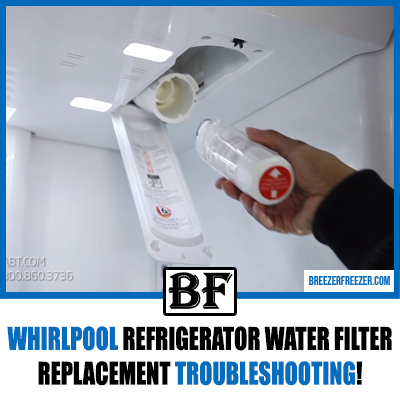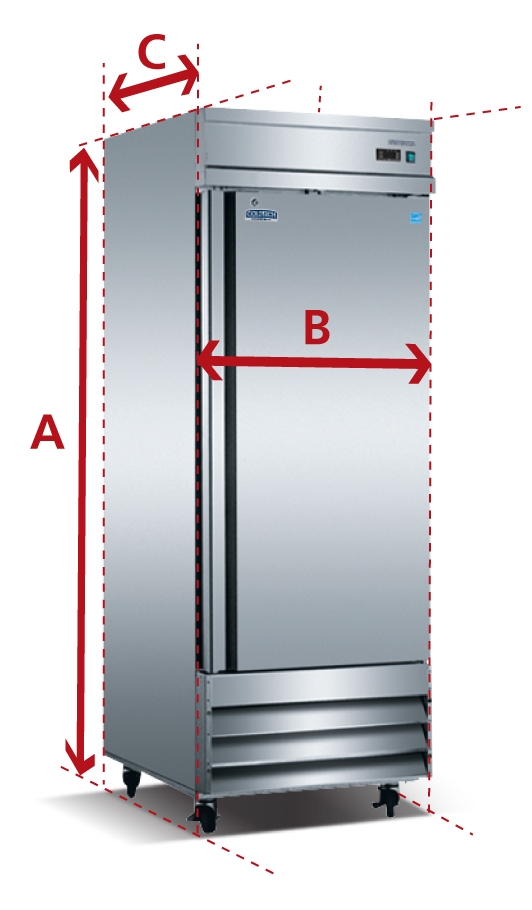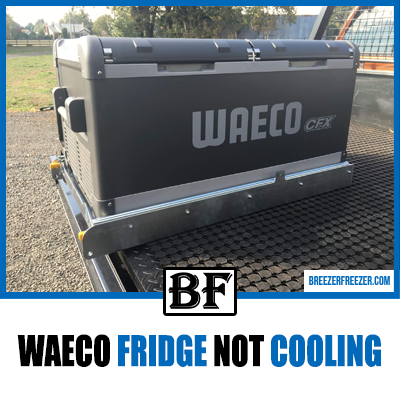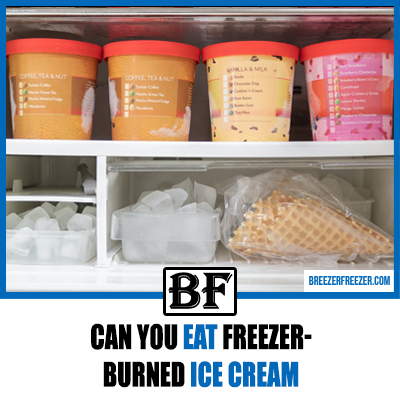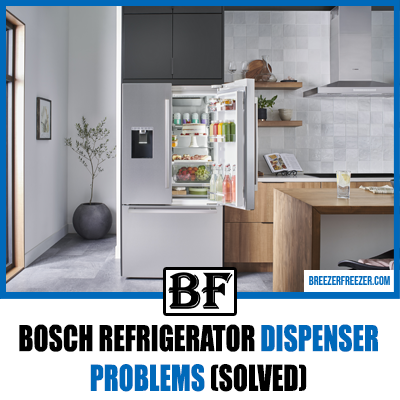Kenmore Refrigerator Not Cooling (Quick Fix)
Kenmore is an American brand that specializes in making refrigerators and various other home appliances.

Over the years, Kenmore refrigerators have risen in popularity since they are extremely efficient and reliable when it comes to cooling food and beverages. However, like all machines and electronic appliances, they are prone to eventually develop some problems.
In this regard, cooling issues are one of the most commonly faced concerns when it comes to refrigerators, and Kenmore is no exception. For instance, the entire fridge may take more time than usual to cool.
At times, you might even notice that the freezer is completely chilled while the rest of the fridge isn’t functioning optimally. There can be several reasons for your fridge to malfunction and create cooling issues.
Therefore, we have put together this guide to help you identify the causes and fix them with simple and easy solutions. So, without any delay, let’s move to the next section.
Why Is My Kenmore Refrigerator Not Cooling Properly?
The cooling process of Kenmore refrigerators follow a cyclical pattern, where the compressor pumps the refrigerant to the freezer. This refrigerant passes through different components that work together to keep the fridge cool from within.
However, a malfunction in the key components can cause the fridge to stop cooling properly. Here is a list of components that can malfunction and result in a poor cooling experience.
1. Condenser Fan
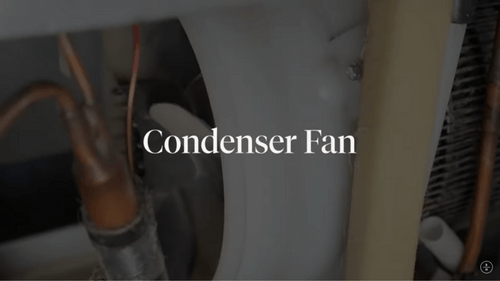
The condenser fan is responsible for cooling the condenser coils while preventing any thermal damage from occurring. Firstly, it is important to check the fan blades that are located close to the compressor. There is a high chance that an object might be obstructing the fans from rotating and pumping cold air inside the fridge. Apart from this, you can try to spin the blades manually to check if they are damaged severely.
If the blades refuse to spin, then you will need to replace the condenser fan blades with new ones. There is also a high chance that the condenser fans may not receive the required power from the fridge. Use a multimeter to test the motor, and if you notice that there is no continuity, replace it immediately.
2. Evaporator Fan
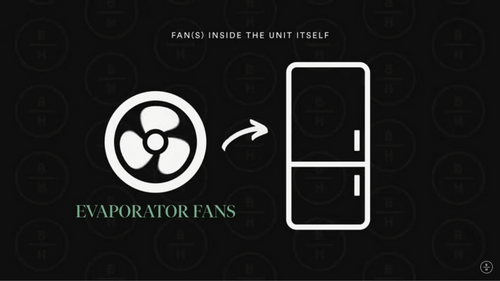
Moving on, the fridge might not cool properly because of a malfunction in the evaporator fan. You can spin the blade and observe if it moves freely. Besides this, you can use a multimeter to test the motor and check if the evaporator coil is receiving power.
Damage caused by corrosion or improper use can disrupt the functioning of the evaporator fan motor. If you notice such damage, shut down the fridge and get the evaporator fan replaced before it can cause any further damage to the machine.
3. Condenser Coils

The condenser coils play an important role in dissipating the heat from the refrigerator. This prevents the fridge from storing too much heat due to overloading or excess work. When the condenser coils stop working, the excess heat gets trapped within the fridge. This slows down the cool air circulation, making the fridge take a longer time to cool down.
On that note, you should inspect the condenser coils and see if there is any noticeable problem. One of the main reasons for the coils to stop working is when dirt starts to collect on the surface. So, we suggest cleaning the condenser coil thoroughly to allow the heat to dissipate evenly.
4. Temperature Control Thermostat
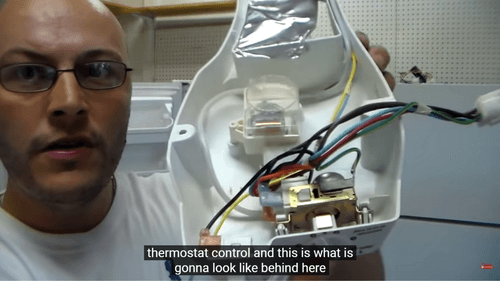
More often than not, the cooling issues in Kenmore fridges may arise due to an issue in the main temperature control board or thermostat. One of the easiest ways to check this issue is by turning the dial from the lowest temperature settings to the highest. While doing so, you will notice a clicking sound coming from the thermostat, which indicates that the component is working perfectly.
However, if you don’t hear the clicking sound, then there might be a problem in the main temperature control board, Kenmore refrigerator compressor, or the main motherboard. In this case, contact a professional electrician to troubleshoot the issue. If your Kenmore Elite refrigerator is still under warranty, then you can easily get the repairs done without any added cost.
5. Inadequate Coolant Or Refrigerant
Another common problem related to Kenmore refrigerators is when the compressor pumps less coolant throughout the fridge. The coolant is made out of a mixture of gasses, such as water, hydrogen, and ammonia which work together to keep the fridge cool from within. As time passes, the coolant slowly starts to dry up, and this ultimately results in a decline of the coolant present in the fridge.
This sudden decline in the coolant is usually noticeable in the fridge compartment rather than the main freezer since it is smaller and requires less coolant. On the other hand, the fridge compartment requires a larger quantity of coolant to achieve the desired cooling.
6. Improper Use
Despite being a sophisticated and complex machine, a Kenmore refrigerator can still malfunction and underperform if it is not used properly. For instance, leaving the fridge door open for a long time will slow down the cooling process significantly.
Some models don’t have a defrosting cycle or a defrost heater installed on the main control board. Hence, there is a high chance of frost accumulation and the evaporator fans getting clogged. Not taking proper precautions in this situation can slow down the cooling process. So, it is recommended to turn off the fridge periodically if it experiences too much frosting.
7. Poor Cold Air Flow

Lastly, the cold air flow inside the fridge is what helps to keep the food and beverages cold at all times. However, if the condenser fan and evaporator fan stop functioning properly, the cold air from the freezer takes longer to reach the fridge compartment. This causes the fridge to cool slowly.
Also, if the vents are blocked due to dust or debris accumulation, then it can block the cold air from circulating efficiently within the fridge.
What To Do When Your Kenmore Refrigerator Is Not Cooling?
As discussed earlier, the main reason for your Kenmore refrigerator not cooling might be because of a defective component within the fridge. Therefore, you should follow the above-mentioned steps to diagnose your fridge and determine where the problem is taking place.
Here are some solutions that will help you fix any cooling issues related to your Kenmore refrigerator:
A. Get A New Compressor
Firstly, you need to change your refrigerator compressor the moment you notice it is faulty. Now, changing the compressor is costly and time-consuming, but since it is an important component, you can’t overlook the problem.
Fortunately, most Kenmore refrigerators are simple to work with since the compressors can be easily removed and replaced. Begin the process by disconnecting the fridge from the power source. Carefully move the fridge away from the wall and unscrew the back panel to access the faulty compressor.
The compressor will be protected by metal guards, so you will need to remove them first before proceeding with the replacement. After completing this process, replace the faulty compressor with the new one and close the back panel. The fridge should then start working optimally. Also, make sure to follow these steps slowly since carelessness can escalate the problem further.
B. Clean The Evaporator And Condenser Coils
Compared to the previous method, this is an easy and simple fix since it doesn’t require you to fully dismantle the fridge or replace any part. You just need to clean the condenser and evaporator coils located at the back of the fridge.
Use a clean cloth and some soapy water to thoroughly clean the coils. After all, dust accumulation can prevent the heat from dissipating properly. This can cause the fridge to have cooling problems.
Moreover, make sure to turn off the mains while cleaning to stay safe from electrocution. After cleaning the coils, give them some time to dry before installing them back in the fridge. This will prevent water from entering the fridge’s motherboard.
Once the evaporator and condenser coils are clean, the fridge will start to function as a brand new unit again. Also, it will save you the cost of hiring an electrician.
C. Replacing The Defective Coils
Moving on, if the problem still continues to persist with the coil, then there might be an external issue. For instance, the coils might be damaged from corrosion or improper use. The coils can also get damaged due to long-term use; hence, you should change them whenever you notice a sudden decline in the cooling process.
However, we suggest getting in touch with a professional appliance repair technician since the process is a bit tricky compared to replacing a compressor. Fortunately, Kenmore refrigerators have a dedicated customer support team. Get in touch with them via email, and they will get the job done in no time.
D. Replace The Old Thermistor
Frequently using the fridge and adjusting the thermistor can make it loose. A loose thermistor can cool your fridge unevenly; therefore, you should only use the thermistor whenever it is absolutely necessary. On that note, you can tighten the thermistor using a screwdriver to make the fridge work normally again.
In addition, if you notice that the problem is still persisting, try to remove the thermistor and see how the fridge performs. If it still continues to give trouble, then you need to replace the old thermistor with a new one. Carefully connect the new thermistor to the control panel and adjust the temperature to your liking.
E. Inspect The Air Circulation
For a fridge to perform efficiently, you need to ensure that the air circulation system is not interrupted by any obstacles. Dust and debris usually get stuck in the cooling fan, and this slows down the entire cooling process drastically. Nevertheless, this isn’t a big issue since the air circulation system can be cleaned on a regular basis.
To avoid dust from collecting on the fans, you should clean them whenever you notice dust gradually building-up on the blades. Additionally, you can use a vacuum cleaner to remove the dust from the blades. Just make sure to set the suction power as mild.
On the other hand, if you own a portable RV refrigerator, then you can install an external vent to provide proper air ventilation to the fridge.
F. Refill The Coolant
Lastly, you can refill the coolant whenever you notice a sudden decline in the cooling temperature. The cooling efficiency of a fridge depends on the available coolant in the fridge. Refilling the coolant is usually an easy and inexpensive process. However, we suggest hiring a professional since it requires you to handle different chemicals that can cause accidents if handled carelessly.
Moreover, we recommend defrosting your fridge before refilling the coolant since it can develop a foul smell inside the refrigerator.
G. Replace the Gasket Doors
Opening the refrigerator doors frequently can cause your Kenmore fridge to have cooling issues since the gasket doors slowly start to wear off and lose their grip. Moreover, if your gasket doors have holes, the coolant can easily escape the fridge. This affects the cooling capacity of the fridge since it takes longer for the compartment to cool down.
Therefore, you should change the gasket doors the moment you notice cooling issues. One of the easiest ways to determine if your fridge needs a door replacement is by placing a piece of paper between the door and the fridge. If you can pull the paper easily, then you will need to get the fridge doors replaced or repaired.
Frequently Asked Questions
Does A Kenmore Refrigerator Face Cooling Issues Due To Hot Weather Conditions?
Under normal circumstances, if the room temperature is hotter than usual, then it is possible for your Kenmore Refrigerator to take a longer time to cool. This problem usually occurs because the compressor needs to work harder to pump the refrigerant through the entire fridge.
However, this can be avoided if you keep the fridge in an air-ventilated room. Also, you shouldn’t leave the doors carelessly open after using the fridge.
Can Faulty Power Source Cause Cooling Issues?
Generally, a fridge will refuse to turn on if there is a power source problem and as a result it will not cool. In this situation, you should check the fuse and plugs of your fridge and make sure the power source is working properly.
DC fridge owners should regularly check and replace the battery if they notice any defect or power problems.
How Can Defrosting Help With The Cooling Issues?
Nowadays, most Kenmore refrigerators have an in-built defrosting system that prevents frost from building up naturally inside the fridge. Too much frost can clog the coils and prevent the fridge from cooling properly.
Therefore, a defrost feature can prevent excess frost accumulation. This feature also helps the fridge to cool better since the coils and other components can function smoothly without any hindrances.
How Should You Stock Your Kenmore Refrigerator?
An unlocked or overstocked Kenmore refrigerator can affect the cooling of the fridge. For instance, unstocked fridges usually freeze the food since there isn’t enough food to absorb the excess cold air circulating in the fridge.
On the other hand, overstocked fridges take longer to cool since they struggle to distribute the cold air evenly. Therefore, we recommend stocking three-quarters of your fridge with food and beverages. Doing this allows the air to flow evenly throughout the refrigerator compartment.
How Often Should You Clean The Condenser Coil Of Your Kenmore Refrigerator?
One of the easiest ways to maintain your fridge is by cleaning the condenser coil periodically. On that note, we recommend cleaning your condenser at least once every six months. Simply pull the condenser out of the fridge and clean it with a clean cloth.
If your house collects dust too often, then we recommend cleaning the fridge at least once every three months to prevent cooling issues.
Final Words
We understand how much of a problem it can be if your refrigerator doesn’t cool the food items properly. That’s why we have discussed some of the most common Kenmore refrigerator cooling issues of Kenmore refrigerators along with their quick and easy fixes.
So, the next time you notice any cooling issue while using your Kenmore Refrigerator, you can refer to our guide for assistance. We genuinely hope that you can get your fridge running in no time with the information we have provided.
With that, we conclude our discussion for today. We will be back again with more helpful and informative guides in the future.
Goodbye, see you next time!
